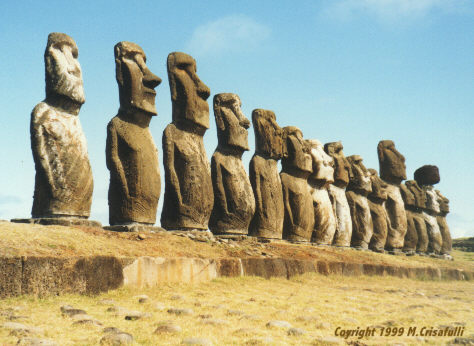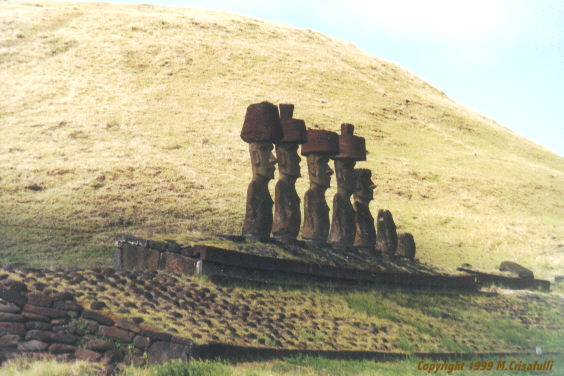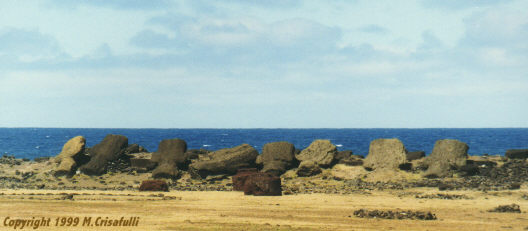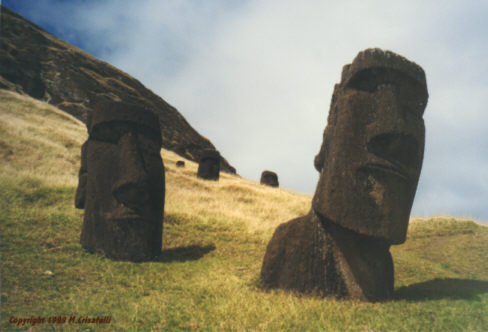
Early explorers described and drew ahu with standing statues, but by the middle of the 1800s all the moai had been toppled in interclan conflicts. Today all ahu with standing moai are restorations.
Ahu and Moai
The moai are found in three situations: on ahu or platforms, in and around the statue quarry of Rano Raraku and along the moai transportation roads.
 |
This is Ahu Tongariki on
the south coast near the quarry. With fifteen moai it is the
most impressive of the ahu and perhaps the most important. It
was restored as an international project just a few years ago. The
site, well documented by archaeologists starting with Katherine Routledge,
was destroyed by a tsunami that washed the statues hundreds of
yards inland from the shore.
Early explorers described and drew ahu with standing statues, but by the middle of the 1800s all the moai had been toppled in interclan conflicts. Today all ahu with standing moai are restorations. |
| Ahu Naunau near Anakena,
the beach of the traditional landing of the original Rapa Nui, has
some of the finest and best preserved moai. The site was
restored by Sergio Rapu in 1978.
There are several schools of thought regarding restoration of ahu. One, perhaps noting that tourists prefer to view restored sites, would have all the ahu restored. Another, considering the sites sacred, would leave all as they lay today. Another, noting completely destroyed sites like Tongariki, would restore those sites that are damaged beyond some point. |
 |
 |
Most of the ahu,
like Ahu Vaihu at left, have toppled moai.
Even after the the moai were toppled the ahu served as ceremonial sites, and tombs were constructed around and under the fallen statues. |
| For me, the ahu were impressive but the statues in and around the Rano Raraku quarry defined the moai. |
 |
| It is photos of these moai that are most often associated with Easter Island, with good reason. As I walked among them I felt each had a personality. They seemed more than statues. Mysterious is actually a good word when one wants to describe these pensive statues. |
 |
This page and its contents © Copyright 1999 Michael & Karen Crisafulli. All rights reserved.